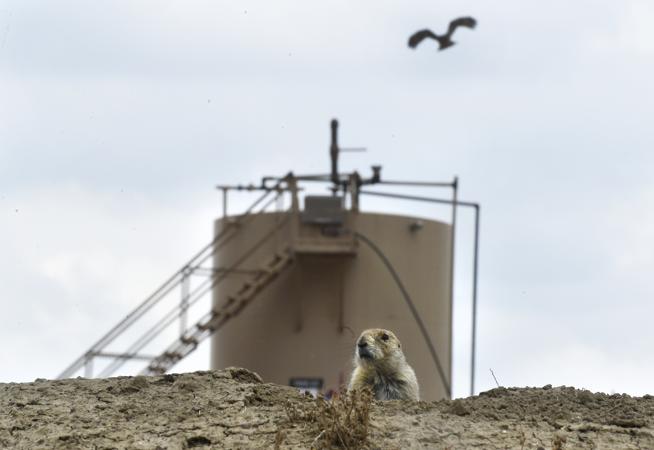The city’s trapping debacle last week has sparked a conversation about the reaches of the city’s Climate Bill of Rights
This article by Anthony Hahn appeared in the Daily Camera, July 26th, 2018.
Last week, as dozens of prairie dogs marked for eradication sat caged for hours in the sweltering afternoon heat, advocates calling on Lafayette leaders to spare the colony were quick to cite protections afforded under the city’s Climate Bill of Rights — the same law invoked by protesters who, only weeks earlier, had hijacked a City Council meeting in an effort to thwart a vote new drilling regulations.
Officials eventually stayed the prairie dogs’ removal — and have since suspended any vote on new oil and gas codes for the time being — but the momentary drama — and lasting uncertainty about the colony’s future — has sparked a conversation about whether the anti-fracking bill’s environmental protections reach beyond the effects of energy extraction to shield the removal of wildlife.
Sanctioned by city leaders last spring after some heavy revisions, the bill’s function has since been subject to varying interpretations. They range from viewing it as a symbolic rebuff of oil and gas development to an effective ban on drilling within city limits, depending on who is asked. It’s seldom referenced in conversations that extend beyond fracking, but advocates say allusions to other protections exist within its broadly written language.
They point to the bill’s clauses stating a “healthy climate and life sustaining resources” are rights that should be allocated equally to both “residents” and “ecosystems.” The latter’s inclusion is both intentional and essential for the cause, advocates say.
“The rights of nature that the bill affords includes rights to a healthy ecosystem,” Lafayette resident Genna Brocone wrote in an email last Thursday. “With the eradication of the colony, the city is depriving both the colony and its predators the right to life-sustaining resources.” MORE…

